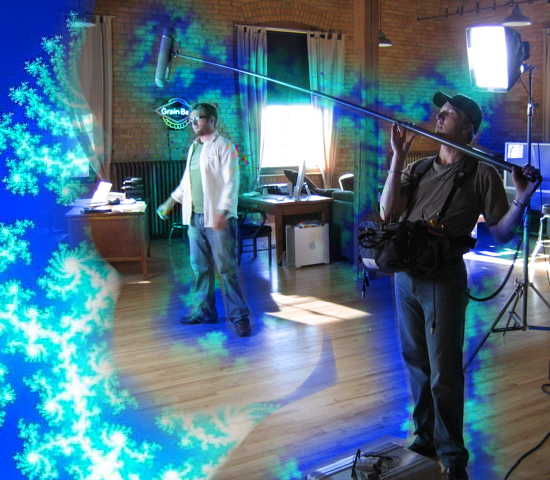Template:Are You Sure/October 14: Difference between revisions
Jump to navigation
Jump to search
(Created page with "• ... that mathematician '''Abraham Fraenkel''' (17 February 1891 – 15 October 1965) contributed to set theory and foundational mathemati...") |
No edit summary |
||
| Line 1: | Line 1: | ||
[[File:Mandelbrot-AI-interview.jpg|link=Benoit Mandelbrot|Artist-Engineers prepare an interface to the famed artificial intelligence [[Benoit Mandelbrot]]. Note the blue fractal aura is a false-color representation of the underlying [[gray light]] effect. Gray light is emitted when an artificial intelligence of sufficient complexity interacts with organic sentient beings.]] | |||
• ... that mathematician '''[[Abraham Fraenkel (nonfiction)|Abraham Fraenkel]]''' (17 February 1891 – 15 October 1965) contributed to set theory and foundational mathematics, that he published two papers which sought to improve [[Ernst Zermelo (nonfiction)|Ernst Zermelo]]'s axiomatic system; and that the result is [[Zermelo–Fraenkel set theory (nonfiction)|Zermelo–Fraenkel set theory]]? | • ... that mathematician '''[[Abraham Fraenkel (nonfiction)|Abraham Fraenkel]]''' (17 February 1891 – 15 October 1965) contributed to set theory and foundational mathematics, that he published two papers which sought to improve [[Ernst Zermelo (nonfiction)|Ernst Zermelo]]'s axiomatic system; and that the result is [[Zermelo–Fraenkel set theory (nonfiction)|Zermelo–Fraenkel set theory]]? | ||
Revision as of 10:04, 14 October 2020
• ... that mathematician Abraham Fraenkel (17 February 1891 – 15 October 1965) contributed to set theory and foundational mathematics, that he published two papers which sought to improve Ernst Zermelo's axiomatic system; and that the result is Zermelo–Fraenkel set theory?
